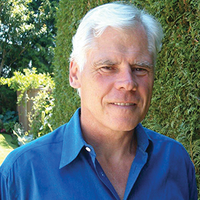
By / Steve Clayman, Director of Energy Initiatives
A fundamental question that often comes up in organizations, irrespective of the activity, is how to do more with less. TIAC is not exempt from this challenge. As a national trade association funded by an honour system model and overseen by volunteers, how does the “Raising the Awareness of Mechanical Insulation” mandate become effective?
In a word, “leverage”. Use this TIAC mandate to show designated influencers how they can benefit by doing something for themselves that also helps TIAC. It stands to reason, the more people who talk about or even mention mechanical insulation, the more the topic enters people’s consciousness. For example, at trade shows we demonstrate removable fitting covers. Delegates are using removable covers to great effect, and they openly discuss the advantages with their fellow delegates. This helps us.
At another trade show, a carpenter came to our booth asking a question concerning his home. He thought the answer would benefit him and when asked about the facility he worked in, he invited three of his colleagues over. This led to a strong lead for a TIAC member.
For the past few years, I have been talking about NECB- 2015 and how the changes regarding increased minimum pipe insulation thicknesses, the requirement for full thickness everywhere, and essentially, that the specified thickness is the installed thickness. I have taken a similar approach to promoting ball valve stem extensions for the simple reason that this item allows for continuity of the pipe insulation and vapour barrier over ball valves.
For this reason, some mechanical engineers now specify ball valve extensions. Whether or not these extensions actually show up on site is another matter, but at least it’s a start. At every opportunity, I mention ball valve extensions to any valve manufacturer or plumbing distributor rep I encounter. I open the discussion with:
- You may have another talking point in your presentations by including how your product enhances energy efficiency, allowing the insulation contractor to insulate the entire valve. Your competitors haven’t been doing this.
- Discussions on retrofit projects should include ball valve extensions.
- Agreeing to demonstrate their product during my presentations to maintenance personnel, mechanical engineers, in trade shows, etc.
Two Victaulic reps recently told me their management made the decision to ship all small bore ball valves with the stem extension already installed. I was thanked for helping them improve their product offering. Another ball valve manufacturer, Apollo Valve, is now advertising their ball valve extensions. I know all the ball valve manufacturers watch each other. We can expect to see companies such as Kitz, Milwaukee, and Crane begin showing the same thing. It makes sense that something as simple as a ball valve extension helps contribute to energy savings, address condensation control, and provide personnel protection. These are the three pillars of exactly that for which we advocate.
This is what I mean by “leverage”. Traditionally, insulation contractors were unable to insulate ball valves. With the increased insulation thickness, the handle could literally be buried in the insulation, and what good would that do? Leaving the ball valve uninsulated makes the pipe insulation non-compliant with NECB-2015. In addition, as provincial energy codes begin harmonizing with NECB, the requirement will certainly spread.
A number of mechanical engineers are changing their specifications to reflect the NECB-2015 upgrades. All of these changes and promotional efforts by others will have serious implications for the mechanical insulation industry. If a specification reads, “…all piping systems and fittings shall be insulated per…” or words to that effect, then that definitely includes ball valves. What if the ball valves with stem extensions weren’t installed? I believe it then becomes the responsibility of the insulation contractor to advise the mechanical contractor in writing.
We are working with the Mechanical Contractors Association of Canada (MCAC) to help them understand the implications of these changes. This, however, is at the national level. We also need to approach the provincial mechanical trade associations to get our message out. I’m not going to address other issues such as spacing, supports, etc. in this article. Nevertheless, these topics should be part of a comprehensive approach to the mechanical contractors. The mechanical engineers play a huge part in this, as well. Helping them understand the impact of a small part of a million plus parts that go into a building’s mechanical design can only benefit our industry. This is where all three TIAC sectors can play a role, particularly the manufacturers.
Just think what this represents in terms of additional volume. If there are literally millions of uninsulated ball valves for new and retrofit work, how many linear feet of pipe insulation does that add up to? How many additional labour-hours of work does that add up to?
Should an insulation contractor not insulate ball valves with stem extensions when this was specified? What would be the cost, financially and in terms of reputation, of that omission?
I’ll leave the response to you, the TIAC members. ▪



